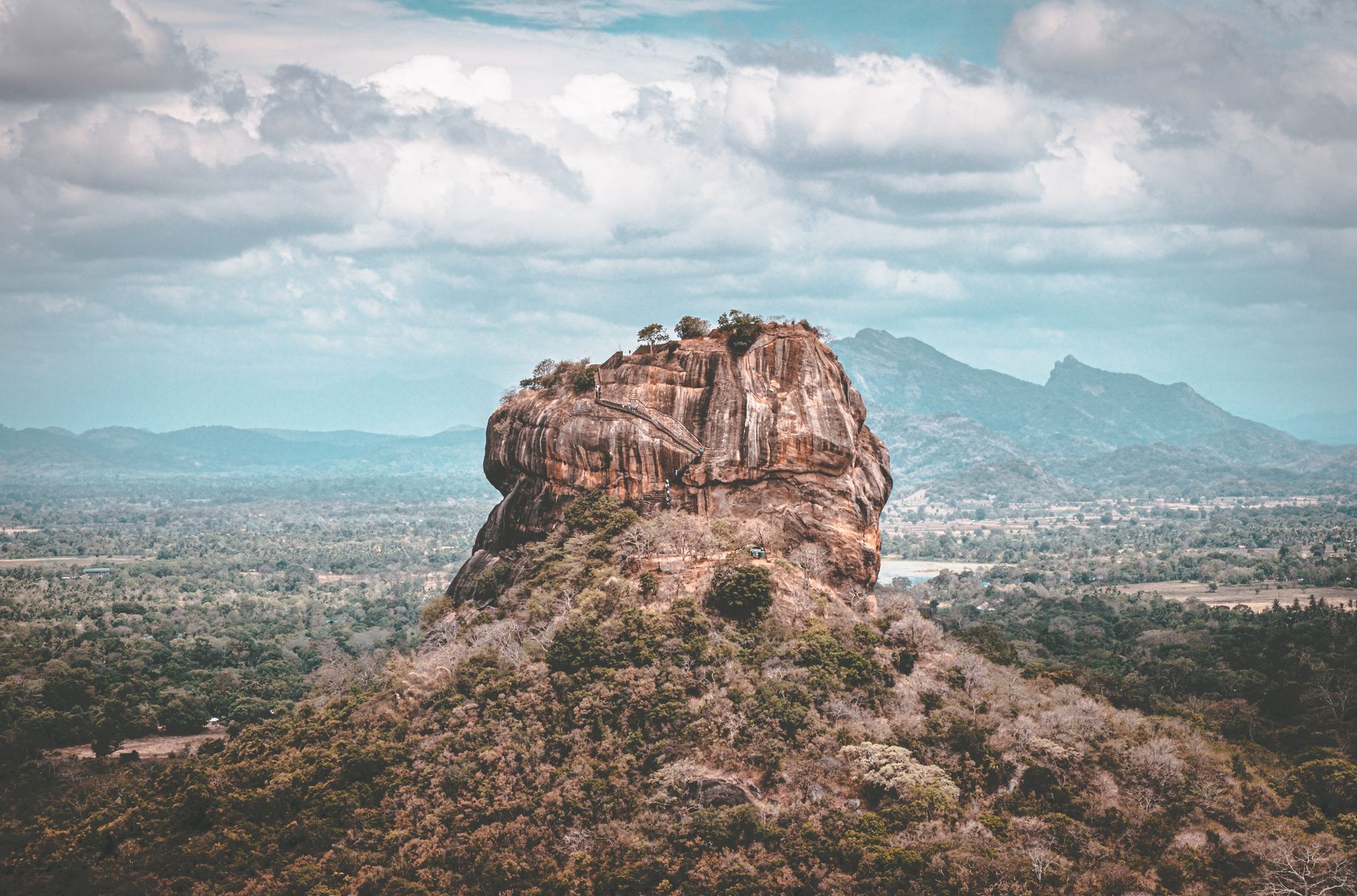
Sigiriya Rock: The Ancient Fortress
The magnificent rock fortress of Sigiriya is Sri Lanka's most iconic landmark. Once the palace of a Sri Lankan king, this rock fortress is a masterpiece of engineering, urban planning, irrigation, and landscaping. This UNESCO World Heritage Site was even named the 8th wonder of the world at one point. This travel guide will take you through Sigiriya's history, culture, and engineering, providing you with detailed information to make the most of your visit.
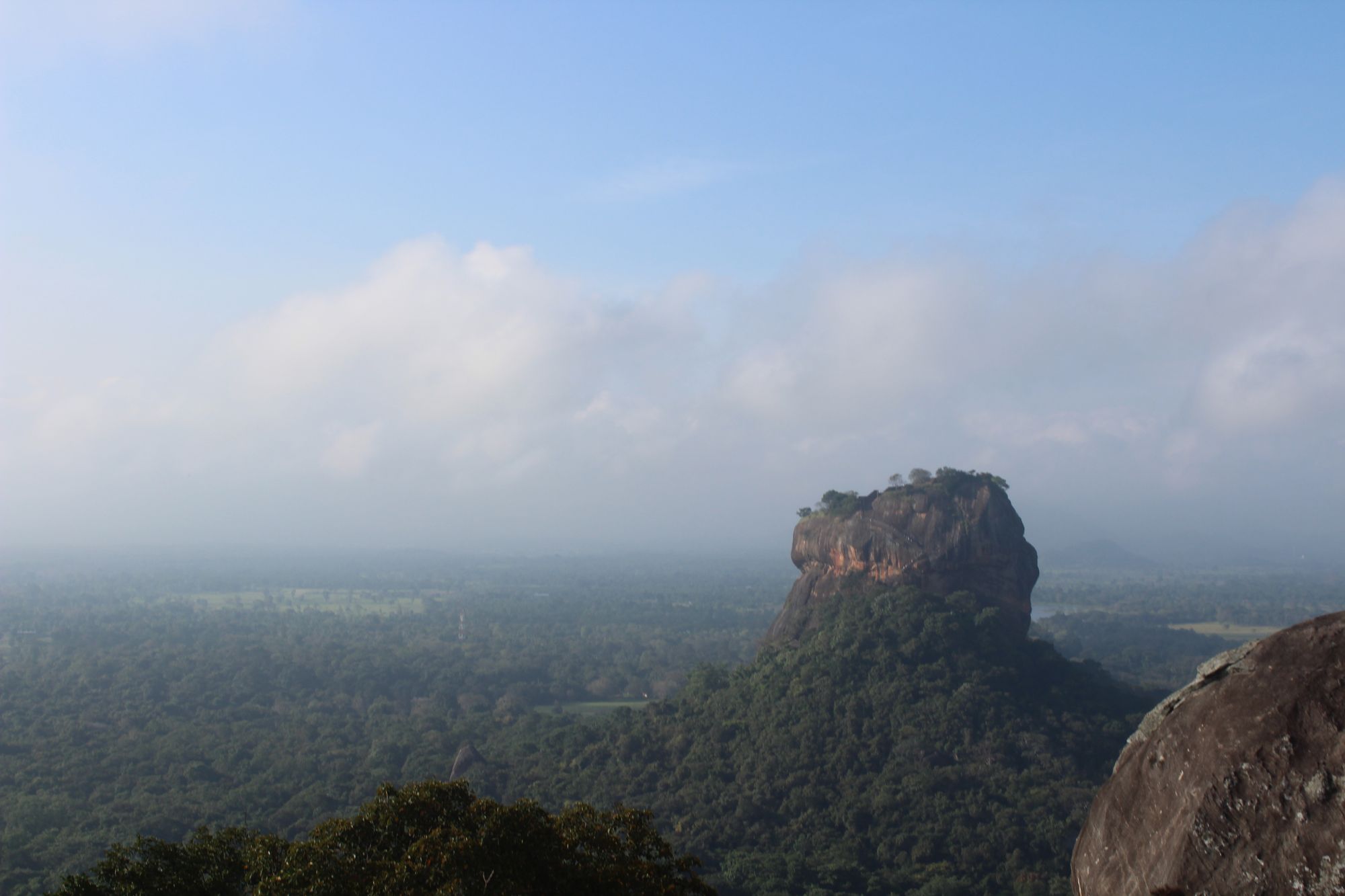
History of Sigiriya
Sigiriya, also known as Lion Rock, is an ancient fortress in the Matale District of Sri Lanka. The fortress was built in the 5th century AD by King Kashyapa, who chose this location as his new capital and fortified palace. The fortress is a massive rock formation that rises over 200 meters.
The history of Sigiriya is rich and fascinating. According to historical records, King Kashyapa built the fortress as a refuge from his brother, Prince Mugalan. Kashyapa killed his father to take the throne for himself, and his brother sought vengeance.
Despite the heavy fortifications, Prince Mugalan managed to invade the fortress, which resulted in King Kashyapa's suicide. Albeit the brutality it has seen, this magnificent structure endured the test of time. It is now known as an icon where culture, history, engineering, and art unite to showcase the wonders of civilization.
The Climb
The hike to the top of Sigiriya is a must-do for anyone if he or she is capable. The hike is moderate to difficult, taking about 1-2 hours, depending on your fitness level. The path to the top is well-maintained and has steps, handrails, and platforms to help you along the way. The climb is steep in some places and can be challenging, but the views from the top are well worth the effort.
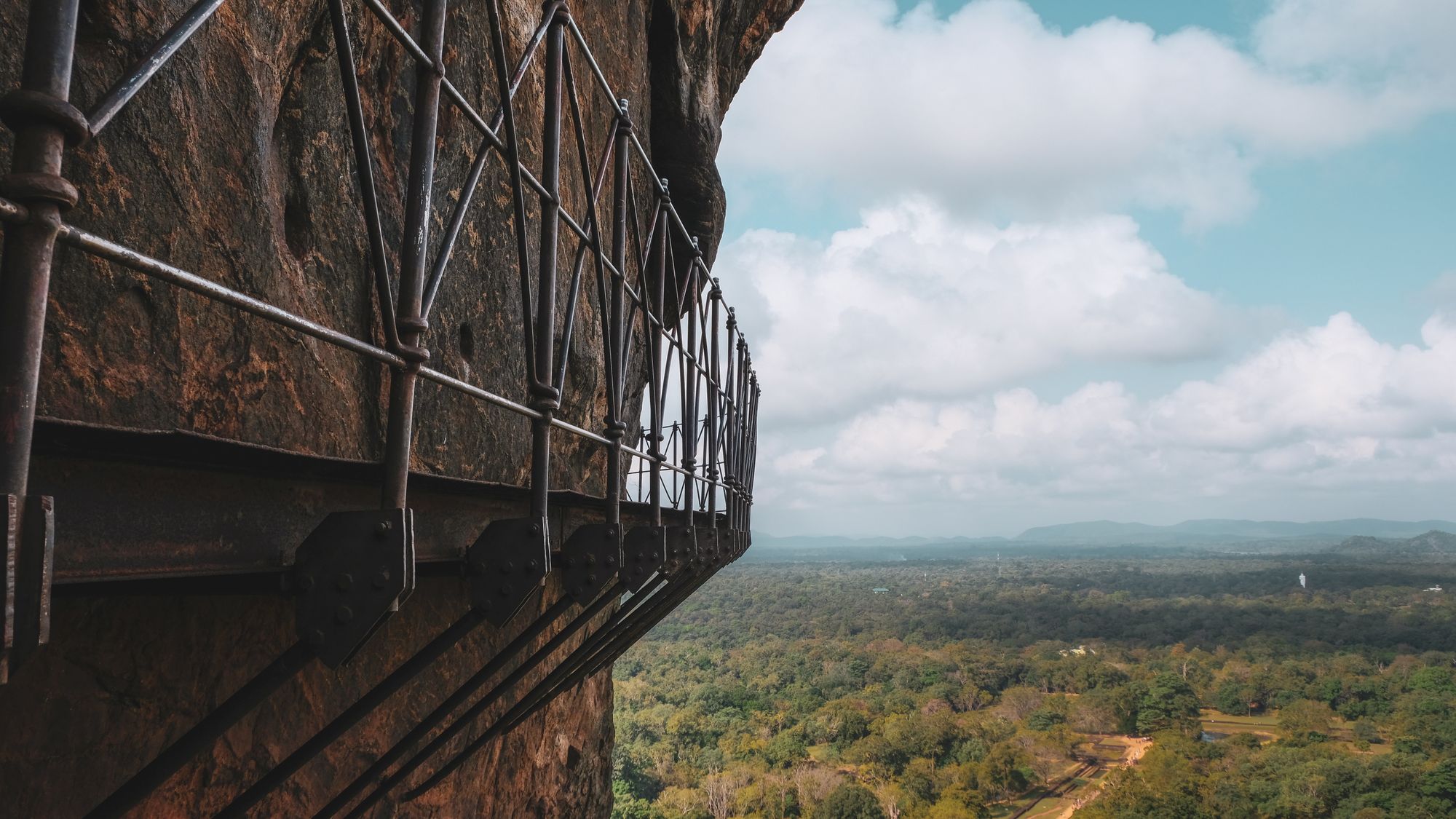
As you make your way up Sigiriya, you'll come across many intriguing sights that speak to the site's historical and cultural significance. One such feature is the ancient frescoes gallery, where you'll need to traverse a narrow, spiral staircase to access the vivid paintings. You'll also pass through the Lion's Gate, once guarded by a massive lion sculpture that lent the fortress its name. Today, only the lion's paws remain, but they provide a striking reminder of the grandeur and power that Sigiriya once represented.
The climb is a perfect opportunity to admire the natural beauty of the surroundings and the impressive engineering of the fortress.
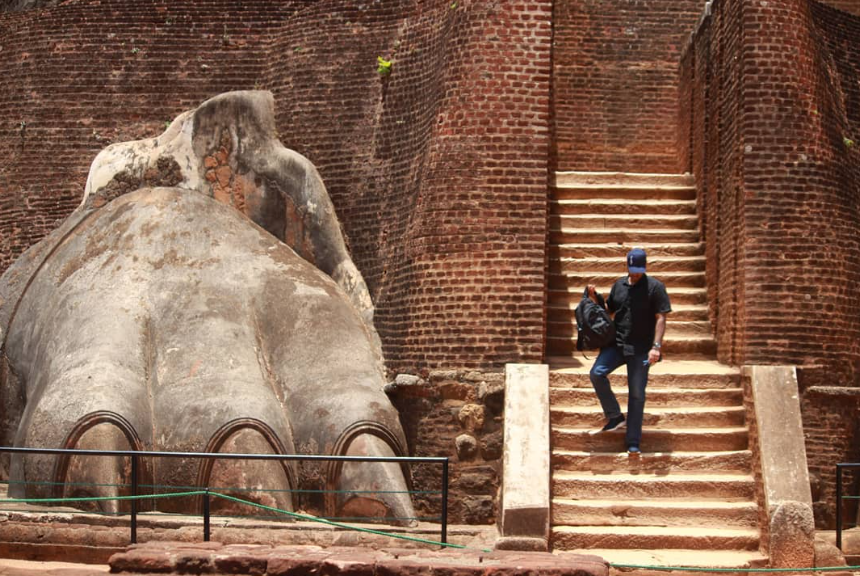
Exploring the Sigiriya Rock Fortress
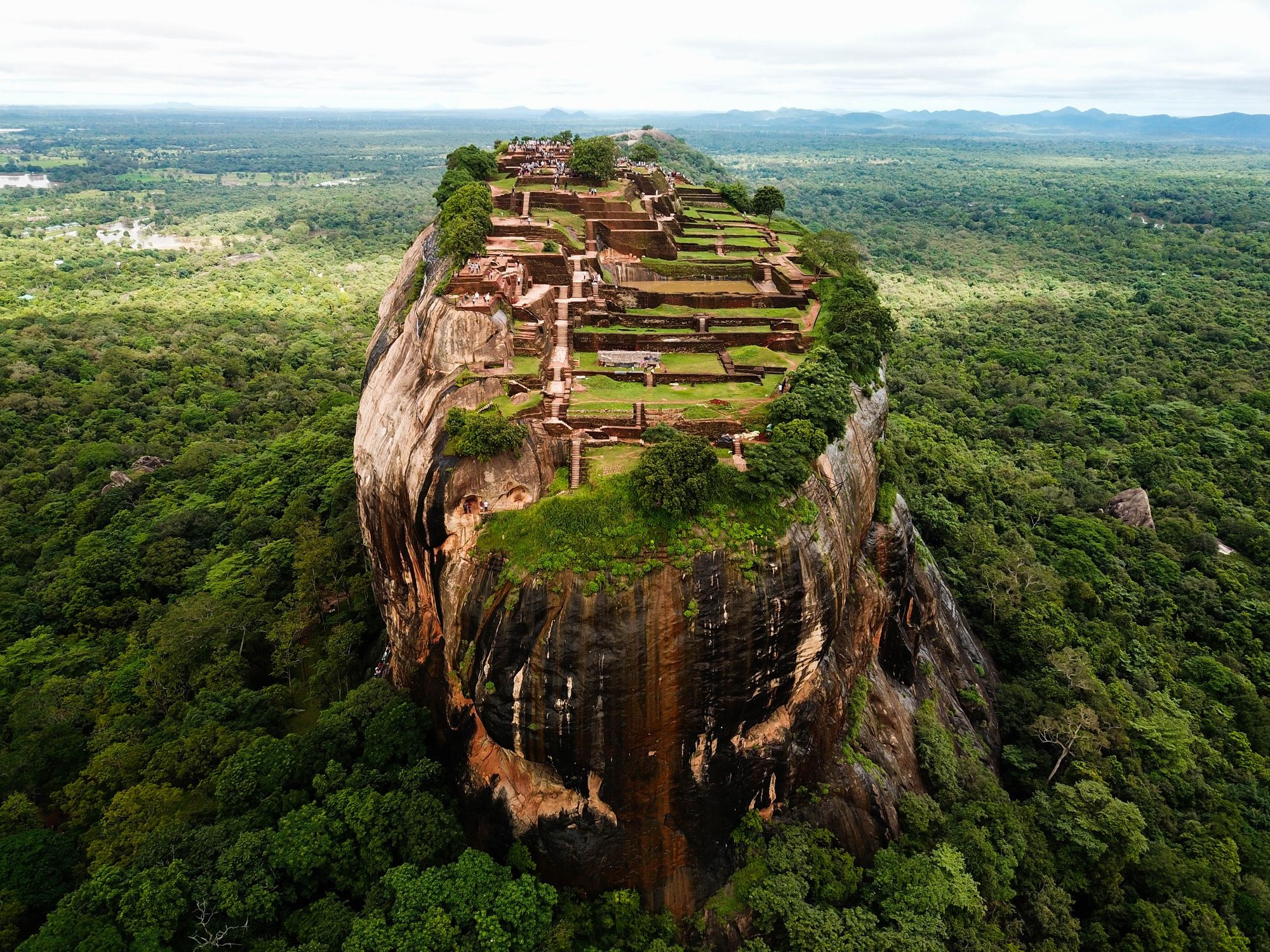
Once you reach the top of the rock, you will arrive heart of the fortress. The fortress is a complex of buildings, gardens, and pools that were once the palace of King Kashyapa. Sigiriya's palace complex is a marvel to behold, as it was ingeniously designed to maximize the limited space available atop the rock. The palace features many well-preserved buildings, including the Audience Hall, the Lion Staircase, and the Mirror Wall. The palace is an architectural masterpiece and gives visitors a glimpse into the lifestyle of the ancient Sinhalese royalty.
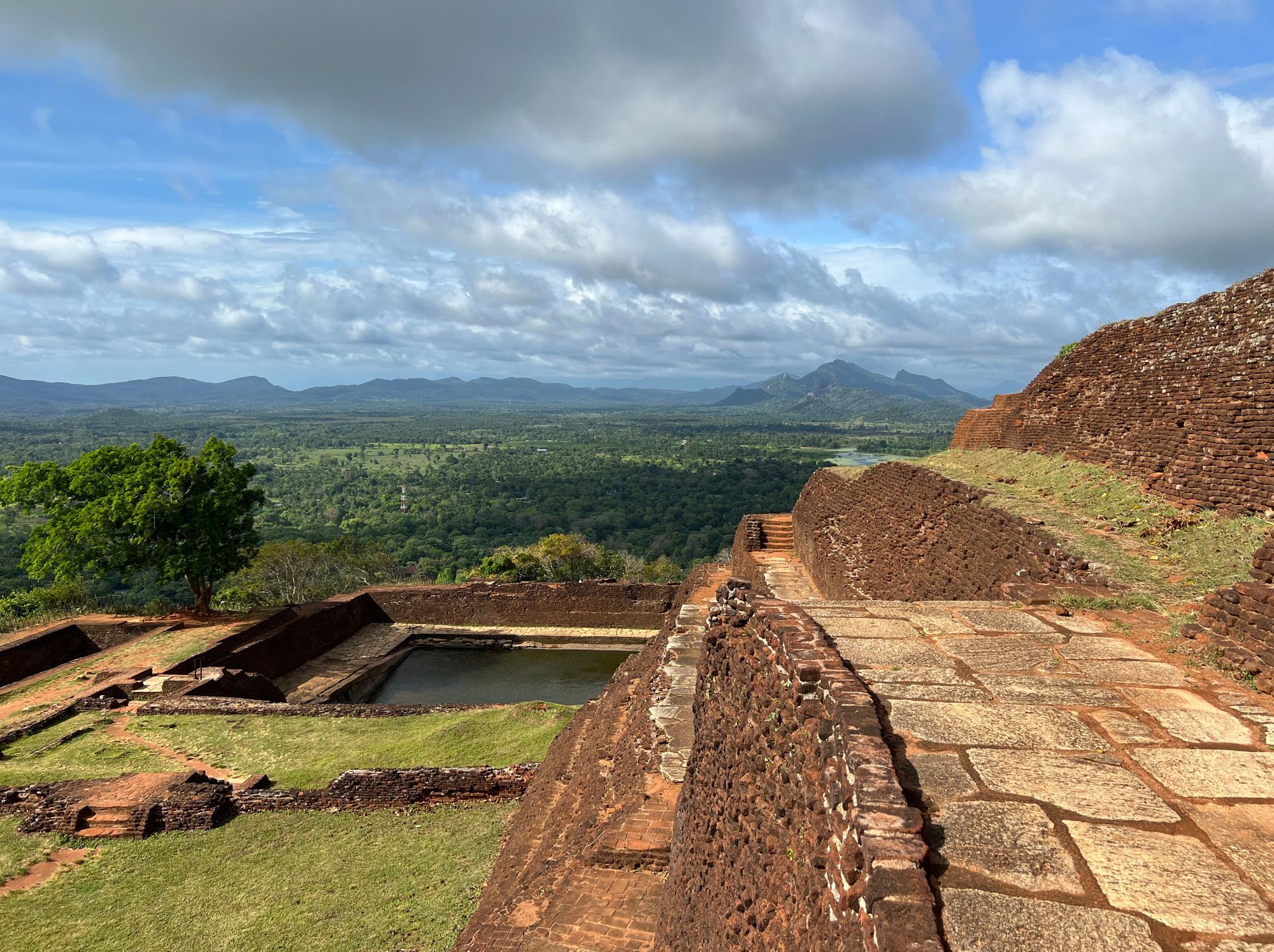
The Water Gardens
The water gardens at Sigiriya are a true testament to ancient engineering and design. The intricate system of pools, fountains, and streams is absolutely stunning. However, the true marvel of these gardens lies in the engineering that makes them function. The fountains, for example, are pressure-operated, functioning without the need for modern pumps. Pipes carved through the rock bring up the water to the top. How this was actually achieved is a mystery to this day.
The Sigiriya Frescoes
One of the most fascinating features of Sigiriya is the frescoes that adorn the rock face. The frescoes are located on the western face of the rock, and they are best viewed in the morning or evening light. The frescoes are a series of paintings of women thought to be the king's wives or divine beings. The paintings showcase an advanced understanding of human anatomy and movement, with each figure gracefully poised and adorned with intricate jewelry and colorful garments. The skillful use of shading, color, and perspective in the frescoes is truly awe-inspiring and will leave you with a lasting impression of the artistic heritage of ancient Sri Lanka. They are considered some of the finest examples of ancient art in Sri Lanka.
The Mirror Wall
Sigiriya's mirror walls are another feature of the fortress. They were supposedly so well polished in ancient times that one could see his reflection. Ancient visitors wrote inscriptions and poems on these walls. The inscriptions found on the wall range from poetic verses to declarations of love, offering a unique perspective on the thoughts and emotions of those who visited Sigiriya centuries ago. As you walk along the mirror wall, take a moment to appreciate the connection between the past and the present, and imagine the countless individuals who have stood in the same spot, marveling at the splendor of Sigiriya. This graffiti provides a glimpse into the thoughts and experiences of visitors from ages ago, offering a unique perspective on the history and significance of the fortress and the Sinhala language.
Entry fees
There is an entrance fee to visit Sigiriya, and tickets can be purchased at the site or in advance through a travel agency.
Accommodation
There are plenty of accommodation options in the Sigiriya area. The area around Sigiriya is especially known to have several luxury hotels and resorts. But accommodations for any kind of budget, such as hostels, Airbnbs, and homestays, are available. Booking your accommodation in advance is recommended, especially during the peak tourist season.
Transportation
Sigiriya is well-connected to other parts of Sri Lanka by road. You can reach the site by your own vehicle, taxi, tuk-tuk, or bus.
Guided tours
To get the most out of your visit to Sigiriya, we advise that you hire a knowledgeable local guide. A guide can provide valuable insights into the history, culture, and engineering of the site and ensure that you don't miss any important features.
Photography
While photography is allowed in most areas of Sigiriya, certain sections may have restrictions, especially where frescoes and other delicate artworks are present. Be respectful of the site and follow any posted guidelines or instructions from your guide.
Supporting the local community
Consider supporting the local community by purchasing souvenirs, handicrafts, or food from nearby vendors. This not only provides an authentic experience but also contributes to the local economy and helps preserve the heritage of the region.
Tips and Advice
- Wear comfortable shoes and clothing, as the climb to the top, can be strenuous.
- Start your climb early in the morning to avoid the heat and crowds.
- Carry plenty of water with you.
- Respect the cultural and historical significance of the site by not littering or causing damage to the fortress or its surroundings.
- If you are not fit for this climb, an alternative route is available to reach the top. Or you can simply admire the view of the fortress from the bottom.
- Make sure to take your camera to capture the stunning views and beautiful frescoes.
- The climb is filled with many smaller sites offering a wealth of cultural and historical knowledge. So make sure to hire a guide to get an in-depth understanding.
- The nearby Pidurangala Rock is a famous viewpoint and offers one of the best views of Sigiriya, so consider hiking there as well.
Nearby Attractions
- Pidurangala Rock: Just a few kilometers away from Sigiriya, Pidurangala Rock is an ideal destination for those looking to escape the crowds and experience a more serene hike. The climb to the summit offers breathtaking views of Sigiriya Rock and the surrounding jungle. Pidurangala Rock also has its own historical significance, as it once served as a monastery for Buddhist monks.
- Dambulla: Dambulla is a fascinating city situated in close proximity to Sigiriya, rich with historical, cultural, and religious significance. This enchanting destination is home to the iconic Dambulla Cave Temple, a UNESCO World Heritage Site renowned for its stunning rock cave murals and intricate architecture. There are also several other wonderful attractions, such as the Rose Quartz Mountain, the Kandalama reservoir, and the Ibbankatuwa Megalithic Tombs. Find out more about the top things to do in Dambulla.
- Minneriya National Park: Approximately 34 km from Sigiriya, Minneriya National Park is an excellent place to experience Sri Lanka's wildlife. The park is home to a variety of animals, including elephants, leopards, sloth bears, and many species of birds. Minneriya is best known for "The Gathering," an annual event where hundreds of elephants congregate around the park's central reservoir during the dry season. This is the largest gathering of Asian elephants in the world.
- Anuradhapura: About 73 km from Sigiriya, Anuradhapura is another UNESCO World Heritage Site that displays the rich history and culture of ancient Sri Lanka. The city was the first capital of Sri Lanka and flourished for over a thousand years. Today, visitors can explore the well-preserved ruins of ancient palaces, temples, and stupas that provide a fascinating insight into the past.
- Polonnaruwa: Located about 60 km from Sigiriya, Polonnaruwa is another UNESCO World Heritage Site that features the ruins of an ancient city. Polonnaruwa was the second capital of the island and served as the royal capital from the 11th to the 13th century. The site is home to well-preserved palaces, temples, and other structures that showcase the skill and craftsmanship of the ancient Sinhalese civilization.
Sigiriya is one of the world's most iconic landmarks and, without a doubt, Sri Lanka's number one travel destination. It is revered by Sri Lankans and hailed as a national treasure. If you visit Sri Lanka, this is one place you definitely should explore. Explore the ancient architecture, history, and culture while taking some incredible photos. It will be a journey to remember!
